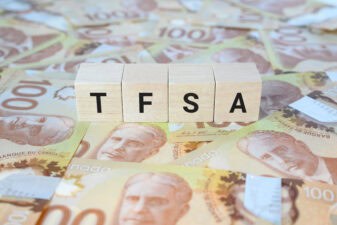Celestica Inc. (TSX:CLS)(NYSE:CLS) has gone through a rough patch over the past five years, but you wouldn’t know it by looking at the company’s share price alone. Profits have finally returned to 2012 levels after five years of a slow rebuild that has seen the company post consistent, but humbling, returns for investors, while the company’s share price has more than doubled.
Wait, the company is earning the same amount of profit as it did five years ago, but the stock is worth twice as much? Investors looking at only the stock price would think that something incredible has happened over the past five years, but I’m about to share with you that little has changed, except for the company’s capital structure.
I’ll look at one of the most clear-cut examples of a company incorporating a capital structure strategy called a leveraged recapitalization and explain what this means for new investors.
Here’s the strategy in a nutshell: assume company A earns the same amount of money each year (for simplicity) over five years with 100 million shares outstanding. At the beginning of this five-year span, the company’s share price is $10. Each year, the company retires 10 million shares at the market price.
At the end of year one, the company’s share price would become $11.11 ($10 x [100/90]); at year two, it would be $12.50; at year three, it would be $14.86; at year four, it would be $16.66; and finally, it would end year five at $20.
Remember, holding everything else constant (nothing changed about the business), the fact that half of the outstanding shares have been repurchased means the stock price of this firm has just doubled in five years due to the retirement of shares in favour of the reduction of assets or issuance of debt.
In other words, the company has decided to issue debt, reduce its asset base, or both, to buy back shares and thus increase the share price.
The total value of a firm is equivalent to the value of its debt plus the value of its equity; trading debt for equity happens all the time, but much of the time, the increased stock price is assumed to be due to the increased prospects of the underlying business rather than its capital structure.
In the case of Celestica, the company has seen a very similar situation in recent years.
In 2016, the company earned free cash flow of $110.2 million, but it paid out $34.4 million to repurchase 3.2 million shares.
In 2015, the company earned free cash flow of $113.2 million, but it paid out $369.8 million to repurchase 28 million shares. The company issued debt via a $250 million term loan, added $25 million to its revolving credit line, and paid $75 million in cash to finance these repurchases.
In 2014, the company earned free cash flow of $177.4 million, but it paid out $140.6 million to repurchase 12.9 million shares ($50 million officially closed in January 2015 but was initiated in 2014).
Bottom line
Over the past three years, Celestica has generated $390.8 million in free cash flow, but it has paid $544.8 million to repurchase shares — a trend which is neither sustainable nor sound in the long term.
It concerns me that management of Celestica cannot find more valuable places to invest these significant amounts of cash inside the business and has chosen instead to return the value to shareholders via share repurchases. In an industry that is reliant on innovation, I would hope that more innovative things would be done with the company’s free cash flow in the future. Until that happens, I will remain on the sidelines.
Stay Foolish, my friends.









